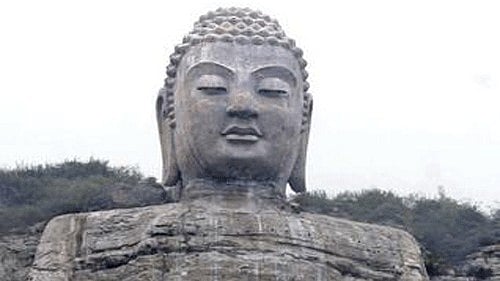
Image for representation only
Credit: Reuters Photo
Buddhism is seen today as the religion of social justice. Yet, in ancient and medieval times, the Buddhist monastic discipline spread concepts of misogyny wherever it went. The best example is what happened when Buddhism spread to Mongolia.
In pre-Buddhist Mongolia, women enjoyed considerable independence. While men raided cities, women managed tents, children, and livestock. They rode horses, hunted, and were socially autonomous. A woman abducted or raped was not stigmatised as impure. Widows could remarry within the husband’s family, ensuring they retained control over wealth and property. But then things changed, as soon as Mongolians began embracing Tibetan Buddhism.
There is a strong association between the rise of Tibetan Buddhism and the rise of Mongol power. Mongol chiefs used Tantrik Buddhist ‘war-magic’ in their battles against China and Persia in the 13th century. Mongol chiefs saw Tibetan lamas as their spiritual counterparts. In fact, the institution of the Dalai Lama was created with the help of Mongol chief Altan Khan in the 16th century.
Altan Khan’s third wife, Queen Jonggun, was a powerful queen. When she became a widow, she remarried into the same family to ensure she retained power. She was part of many negotiations with the Chinese. Yet, information about her is scarce. She was erased from memory by later Buddhist writers.
In the 17th century, many Mongol nomads were converted to Tibetan Buddhism. This was partly a Chinese imperial strategy to ‘tame’ the warlike Mongols. With Buddhist moral codes, widow remarriage within the husband’s family was frowned upon. Women lost control over family wealth as a result, and became dependent on men. Buddhist writers toned down tales of powerful women of the past whose power came from levirate marriage — remarriage within the husband’s family. Queen Jonggun famously married across four generations of fathers and sons, consolidating great power. Her invisibility in history shows how female power was systematically suppressed in the name of Buddhist morality.
Religions often bring economic and political consequences, not just spiritual ones. While Buddhism today is marketed globally as a path of calm meditation and at times as a ‘spa’ religion for managing stress and anxiety, historically, Buddhist monks were political actors. The king was often presented as the protector of dharma or even a Bodhisattva.
Chinese kings often saw themselves as earthly incarnations of Bodhisattva Majushri. Support of the Buddhist monastic order was key to achieving succession. So royal matters in Buddhist kingdoms were intertwined with monastic politics. In recent times, countries like Sri Lanka, Myanmar, and Vietnam have witnessed monks leading protests and mobilising violence in the name of social justice, and even ethnic purity. Buddhism, in its long history, has been anything but otherworldly as popularly assumed.
In the early days of the Sangha, the Buddha was reluctant to ordain women. Only when he saw his stepmother suffer at the death of his father did he accept that suffering is gender agnostic. Only then did he permit nuns, though with stricter rules than for monks. Women became donors and patrons of Buddhist monasteries, but rarely attained high power within the monastic system. Buddhist stories like the Jatakas portray women as sexually aggressive, dangerous beings. In the book of monastic discipline (Vinaya Pitaka), monks were warned to avoid being alone, always cover themselves, and guard against ‘predatory women’.
Buddhist institutions often see themselves as pure, in contrast to women who are considered polluted by menstruation and blood. This belief in female impurity reinforced exclusion from higher spiritual ranks. Female impurity was linked to blood. This was linked to the impurity of meat, which also contains blood. Thus, rejecting women and rejecting meat and fish are monastic ideas aimed at making men purer and more pious, enabling them to rise spiritually and be liberated from the wheel of rebirth.
Women must be reborn as men if they seek liberation. Across Buddhist lands, misogyny and patriarchy have been clearly documented. That Buddhism could be a vehicle of patriarchy and puritanical values is rarely discussed. This is why the story of the Mongolian queen and her erasure from history is such an important idea.
From Mongolia to South and Southeast Asia, Buddhism carried with it notions of purity vs pollution, institutional patriarchy, and systematic marginalisation of women. The goddess Tara appears in Buddhist art only after 800 AD, but she was simply an allegory, an embodiment of wisdom, to the compassion of the Buddha of Mahayana and Vajrayana Buddhism. In China, Empress Wu used Buddhism to gain power and saw herself as the Bodhisattva. This may have inspired the rare idea of the female Bodhisattva of East Asia, Kwanyin.
Generally, women are absent from the Buddhist landscape. Yet, modern narratives often ignore or romanticise this dimension, presenting Buddhism as uniquely tolerant or egalitarian, even a champion of social justice.
Devdutt Pattanaik is the author of more than 50 books on mythology. X: @devduttmyth.